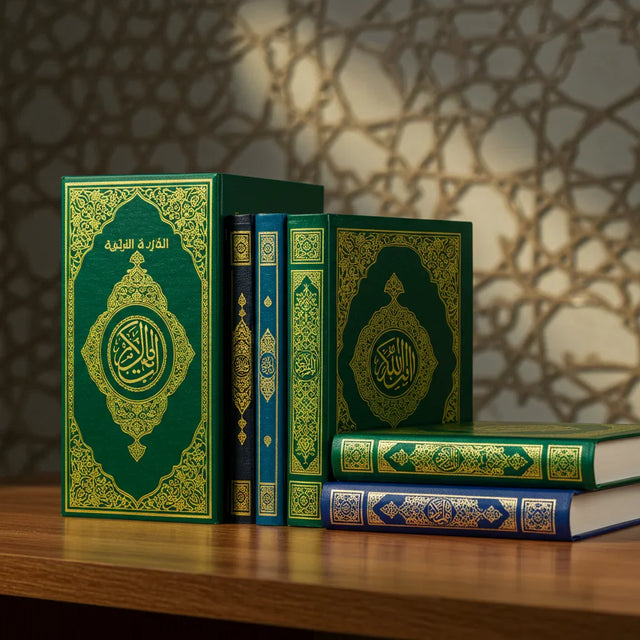
Quran
-


Tajweed Rules of the Quran part Two- أحكام تجويد القران
This is the second part of what shall be, insha' Allah, a three part series on the rules of tajweed of the Qur'an, for the recitation of Hafs from 'Aasim by the way of Ash-Shaatibiyyah. The book is intended to be a guide for non-Arabs with a good grasp in English in studying tajweed. This book explains the concept of the accent (an-nabr) in the recitation of the Glorious Qur'an and the conditions of its use, it also defines and explains the important chapter on the characteristics of the letters, velarization and attenuation (tafkheem and tarqeeq) are covered in this part, as well as the concept of the two alike, the two similar, the two close, and the two far and the rules for idghaam and ith-haar in these different relationships. A brief introductory to grammar terms is made in this book to assist the student in understanding the last chapter, that of the connecting hamzah (hamzah al-wasl). The explanations of the different subjects are in English, and the Arabic terms are translated. This is to assist the student in understanding and encourage them to learn the Arabic definitions and terms. This book should facilitate non-Arabs studying tajweed whether they are in a classroom with explanations taught in Arabic or in English. This book cannot replace the importance of reciting to and being corrected by a trained teacher of tajweed, instead it is a guide and an aid in understanding the concepts of tajweed, the application can only be refined by recitation and correction
£7.50
-


Tajweed Rules of the Quran Part 1- أحكام تجويد القران
This book explains the articulation points of the Arabic letters, the rules of noon saakinah, meem saakinah, and lam saakinah. It explains all of the different lengthenings(mudood) and how voweled/non-voweled letters are formed. The qalqalah mechanism is explained in the last chapter. Terms are introduced in Arabic and then translated into English. Explanations are done in English but with integration of the Arabic terms as they are learned.
£7.50
-

Tajweed Rules of the Quran (3 Parts Set)- أحكام تجويد القران
This is a complete set of 3 books. Book 1 – This is a guide for studying tajweed. The student who uses this bookis expected to have a basic grasp of Arabic before starting thiscourse. The student should know all the Arabic letters and vowels andbe able to read at an elementary level. This book is either for anEnglish speaking student studying the Qura’an in an Arabicenvironment, but needing explanation of the Arabic terms in English,or a student studying the explanations of tajweed in English, butlearning the basic concepts in Arabic so they may integrate into theArabic terms and definitions throughout the book, since the science oftajweed is an Arabic science. This book explains the articulation points of the Arabic letters, therules of noon saakinah, meem saakinah, and lam saakinah. It explainsall of the different lengthenings (mudood), and how voweled, andnon-voweled letters are formed. The qalaqah mechanism is explained inthe last chapter. Terms are introduced in Arabic, and the translatedinto English. Explanations are done in English, but with integrationof Arabic terms, as they are learned. A student of the Qur’an cannot except to learn tajweed simply bystudying this book. The learning of proper Qur’anic recitation canonly be done by listening to a qualified Qur’an teacher recite, thenreciting to them and receiving corrections from the teacher. Book 2 – By Allah’s grace, this is the second part of what shall be, insha’Allah, a three part series on the rules of tajweed of the Qur’an, forthe recitation of Hafs from ‘Aasim by the way of Ash-Shaaibiyyah. Thebook is intended to be a guide for non-Arabs with a good grasp inEnglish in studying tajweed. This book explains the concept of the accent(an-nabr) in therecitation of the Glorious Qur’an and the conditions of its use, italso defines and explains the important chapter on the characteristicsof the letters, velarization and attenuation (tafkheem and tarqeeq)are covered in the part, as well as the concept of the two alike, thetwo similar, the two close, and the two far and the rules for idghaamterms is made in this book to assist the student in understanding thelast chapter, that of the connecting hamzah(hamzah al-wasl). The explanations of the different subjects are in English and theArabic terms are translated. This is to assist the student inunderstanding and encourage them to learn the Arabic definitions andterms. This book should facilitate non-Arabs studying tajweed whetherthey are in a classroom with explanations taught in Arabic or inEnglish. This book cannot replace the importance of reciting to and beingcorrected by a trained teacher of tajweed, instead it is a guide andan aid in understanding the concepts of tajweed, the application canonly be refined by recitation and correction. Book 3 – Al-hamdu lillah, this is the third and final part of a three part series in English on the rules of tajweed of the Qur’an for the recitation of Hafs from ‘Aasim by the way of Ash-Shaatibiyyah. These books are meant as a guide for non-Arabs with a good grasp of English for studying tajweed of the Glorious Qur’an. This final book explains the stop and start when reading the Glorious Qur’an, and gives details as to what kind of stop is allowed, what kind preferred, and what kind of stop is forbidden. Stopping on the ends of words with strong endings (consonants)and rules for what is allowed on the last letter of the word is described, including and Stopping on the ends of words with weak endings (words ending in the alif, ya’ or wow) and different rules and explanations for these type of words is clarified. One important aspect of Qur’an recitation is knowing and understanding which word combinations are written together and which separately in different parts of the Qur’an as well as in which places of the Qur’an are some words are written with the female and in which places they are written with the This part lays out the different places in the Qu’ran these occurrences take place, so the reader knows how he/she can stop on these words. The words that are read in a special way, or have two allowed ways for the reading of Hafs from ‘Aasim by the way of Ash-Shaatibiyyah are detailed in this book. The history of the writing of the Glorious Qur’an (– ) and the general rules for the writing of the Qur’an are laid out in the last chapter of this part. This last part of the three parts on tajweed is for students who have studied and mastered the other two parts, or have studied everything covered in the first two parts. The explanations of the different subjects are in English, and the Arabic terms are translated. The goal is always to assist the student in understanding and to encourage them to learn the Arabic terms and definitions. The three parts of this series on tajweed rules of the Glorious Qur’an should facilitate non-Arabic speaking students of the Qur’an whether they are in a classroom with an Arabic medium for teaching or English. With this third part completed, insha’ Allah the non-Arab English speaking student of the Qur’an will find a complete curriculum and explanation of the tajweed rules for the recitation of Hafs ‘an ‘Aasim from the way of Ash-Shatibiyyah in any classroom or study situation that he/she may find themselves in. These three parts are only guidance; the real goal is reciting and applying all the different rules correction which can only be done by reciting to and being corrected by a qualified teacher of the Qur’an
£25.00 £21.99
-


Tajweed Quran 30 Parts in Leather Case- A3 Extra Large – مصحف التجويد ٣٠ جزء
This is the Luxury paperback Tajweed Quran divided into thirty separate parts, it all comes in a nice black and solid leather bag which is perfectly designed to keep the parts from any loss or damage, its features distinct colors for each Tajweed rule, making it easier to follow and correct recitation of your Tajweed of the Qur'an.This Tajweed Quran makes it much easier for a group of people to read the whole Quran in the very same time, by spreading the parts among them.It is also an ideal for passengers so they only carry one lightweight part at a time, avoiding the heavy weight of the normal Quran, so you can take one or two parts which didn't take place in your bag.These thirty parts of Tajweed Quran comes in the standard portrait form, each part comes with a nice glossy softcover, and every part is numbered on the front, from 1 to 30. Each page contains 15 lines as any standard Quran, with an interpretation of selected words placed on the margins on every page.
£44.99
-

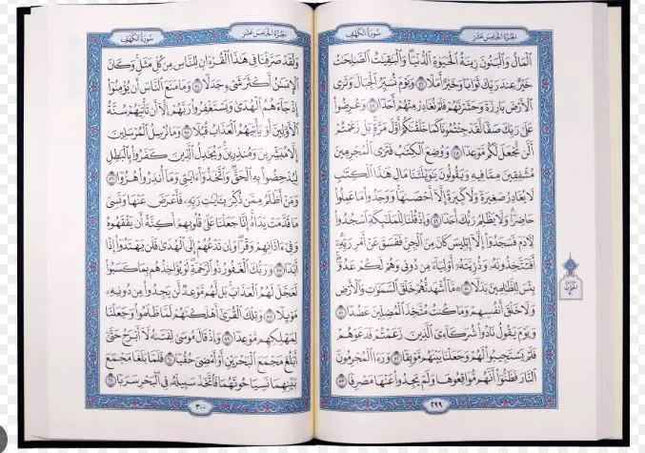
Madinah Mushaf Uthmani Script – مصحف المدينة- Large
This new, large-format edition of the Madinah Mushaf, printed in Saudi Arabia, closely resembles the classic Madinah Mushaf but introduces some notable updates. With the Saudi government now utilizing a new printing company, changes include adjustments to the font and page layout.This deluxe hardcover edition is crafted with fine paper and features a colored background, adding to its elegant presentation. This larger Quran size is also known as "jawamee."
£24.99
-


Easy Quran Reading with Baghdadi Primer (Paperback)
About the book and its contents: The subject of this book is from the original Baghdadi Qaida book. The book uses a gradual system in teaching the alphabet and reading (for children and beginner adults) from using the letters, to forming the word, to forming an Arabic sentence. This is in an organized curriculum that similarly follows what has been used in Egyptian hifz schools. This system is unique from other systems that are currently used in teaching, which use a system that is like an upside down pyramid, starting with the Arabic sentence, moving forward to the word and from the word to the letter - the building block of the word. Then a young student who hasn't reached six years of age is expected to open a book and read after his teacher lessons with mixed vowel marks (fathah, dhammah, and Kasrah), some with tanween and others with elongation; some with sukoon, some heavy and others light, and some definite and others indefinite. What distinguishes this version of the book An increase in the usage of the articles and a number of exercises for each lesson. Sound rules with exercises on laam qamariyyah and laam shamsiyyah. Prefixing some particle letters to the definite article. Explanation of the difference between the taa letter in its closed and open form. Hamzat al-wasl and how it's used at the start in the opening of the Qur'an. The rule when two letters with sukoon meet. Special practicing exercises taken from our other book, Rules of Reciting the Qur'an, covering: Rules of noon saakinah and tanween. Rules of meem saakinah. Attached madd and separated madd. General exercises. Also available on media for your convenience. An interactive, animated CD with distinguished childrens voices covering the same content & curriculum as the book is sold separately.
£7.99
-


Juz Amma for School Students (With Transliteration) Paperback
Title: Juz Amma for School Students (With Transliteration) Author: Husain A. Nuri & Mansur Ahmad Book Binding: Paperback Pages: 216 Size: 28 x 22 cm (approx) Publishers: Weekend Learning Publishers
£15.00 £13.99
-


AL MULKHHAS AL MUFEED FI ILM AT-TAJWEED- الملخص المفيد في علم التجويد
تأليف : محمد أحمد محمد معبد موضوع : التجويد والقراءات نوع التجليد : غلاف نوع الورق : ابيض عدد الصفحات: 192 سنه الطبع: 2024 سنه الإصدار: 2007 الطبعة: 25 المقاس: 17×24 سم سعة الكرتونة: 160 نسخة الترقيم الدولي : 977-342-461-8
£9.99
-


Illustrated Tajweed Arabic-English Updated (1 volume) (التجوید المصور)
The author has included in this exceptional work the most correct material and detailed definitions relating to the science of tajweed, utilizing vivid illustrative pictures of the organs of speech and what relates to them, and using colours to clarify some tajweed concepts and distinguish them from each other. He has also attached some QR codes to clarify some phonic facts. To make the benefit more complete, he has attached two topics related to the Qu'ran: The first relates to the different stages of development of the script of the Qu'ran, and the second relates to the memorization of the Holy Qu'ran and some important matters.
£29.99
-
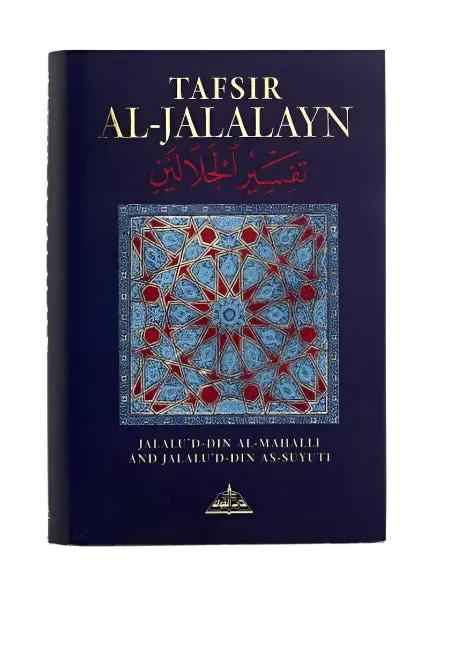
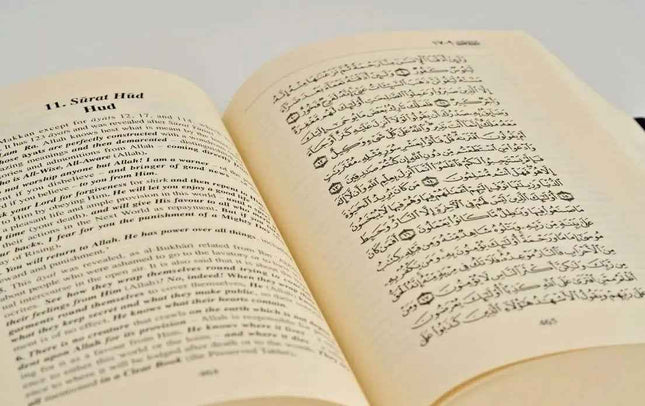
Tafsir Al-Jalalayn- Hardcover
The publication of this book is a landmark in the history of Islamic literature in English. With this work, for the first time, a complete translation of one of the great classical commentaries on the Holy Quran becomes available to English-speaking readers. Tafsir al-Jalalayn, meaning “The Commentary of the Two Jalals”, is named after its two authors: Jalalu’d-Din al-Mahalli (1389-1459), who wrote half of it, and his student, Jalalu’d-Din as-Suyuti (1445-1505), one of the greatest Muslim scholars of all, who completed it after al-Mahalli’s death. For half a millennium Tafsir al-Jalalayn has been considered the essential first step in the study of the meanings of the Quran by teachers and students throughout the Islamic world. Although it is among the shortest and simplest of the complete commentaries, it is at the same time both wide-ranging and profound. This translation gives non-Arabic speakers access to one of the seminal works of classical tafsir literature. It is hoped that it will prove a valuable aid to the correct understanding of the Quranic Revelation throughout the English-speaking world. JALALU’D-DIN AL-MAHALLI (791-864/1389-1459) of Cairo was a versatile, scholar who excelled in jurisprudence, theology, grammar, rhetoric, and Quranic commentary. He was known for his scrupulousness, fear of Allah, and fearlessness in upholding the truth. Al-Mahalli was offered the highest judicial positions but refused them. He taught jurisprudence in the Mu’ayyadiyya and Barquqiyya madrasas. Abstinent and ascetic, he lived on what he earned by trade. His most famous work is his Quranic commentary, Tafsr al-Jalalayn, which he began halfway through the text with Surat al-Kahf, ending with an-Nas and al-Fatiha. Although he died before he could start the other half, the work was completed by his student, Jalalu’d-Din as-Suyuti. Al-Mahalli’s other books include commentaries on Jam‘ al-Jawami‘, al-Burda, al-Manahij fi’l-fiqh, al-Waraqat fi’l-usul, and Kitab al-Jihad. JALALU’D-DIN AS-SUYUTI (849-911/1445-1505), from Asyut in Egypt, was among the most renowned and prolific Muslim scholars of all time. He wrote more than 300 books, covering every aspect of the Islamic sciences. He memorized the Quran at the age of eight, and then went on to study with more than 150 scholars. He travelled extensively in his quest for knowledge – to Damascus, Hijaz, Yemen, India, Morocco, and the lands south of Morocco, as well as in Egypt. Al-Suyuti devoted his life to learning, teaching and writing. He was noble, abstinent and self-sufficient, distancing himself from people of rank and power and living on what he earned by teaching. Major writings of al-Suyuti that remain widely used today include al-Itqan, on the Quranic sciences; and Tafsir al-Jalalayn, which he completed when only 22.
£45.00 £39.99
-
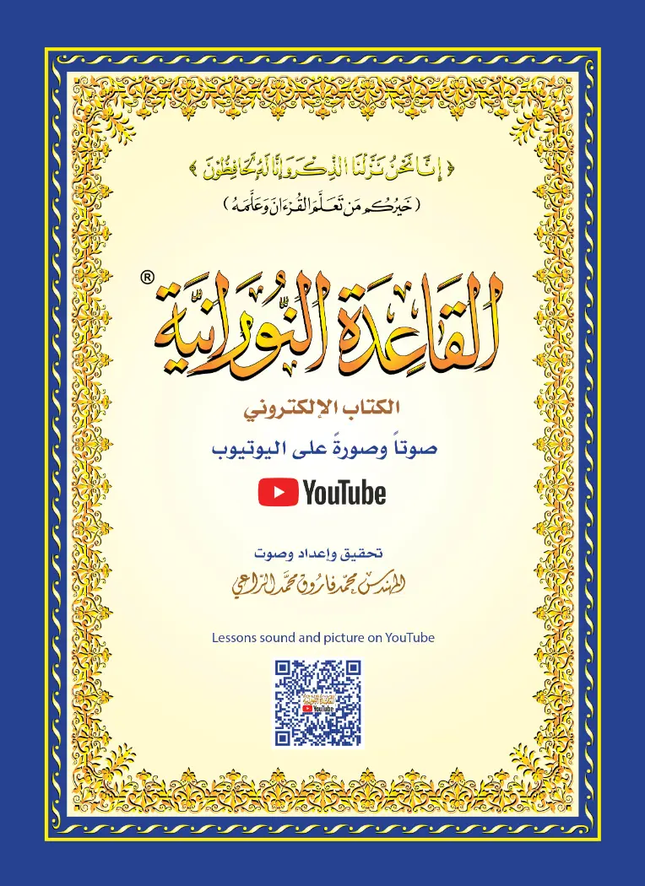

Qaida Nooraniah Small (QR Code)
Noorani Qaida is a way to learn to recite the holy Qur'an. This is one of the basic and easy resources to understand how to Quran Works. One can start by learning the Alphabet like Alif Baa Taa, Then rules like Adgham, Qalb, Ikhfa, and others. This is the Uthmani Script which is used in most of the Arab and North African World
£4.99
-


Qaida Nooraniah A4 (QR Code)
Noorani Qaida is a way to learn to recite the holy Qur'an. This is one of the basic and easy resources to understand how to Quran Works. One can start by learning the Alphabet like Alif Baa Taa, Then rules like Adgham, Qalb, Ikhfa, and others. This is the Uthmani Script which is used in most of the Arab and North African World 26.5 x 20 cm
£7.99





























